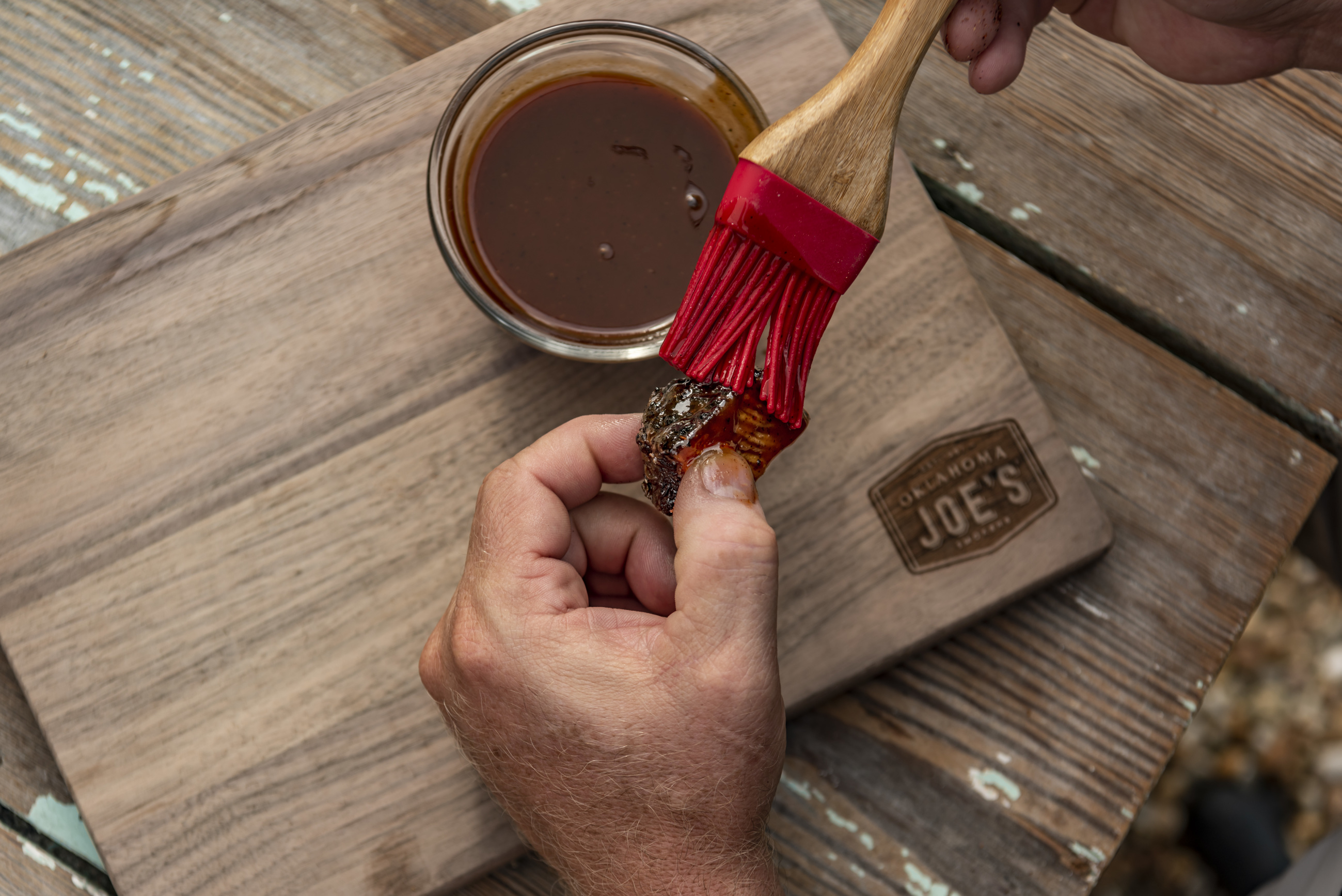How to Clean and Maintain Your Smoker
Has your smoker been sitting around dormant for a while? No worries. Just a few simple steps and your Oklahoma Joe’s® Smoker will be clean and ready to go. With frequent use and proper storage, routine maintenance will keep your smoker in good shape. The better you keep the outside clean and the inside seasoned, the longer it will last and better it will perform.
Instructions
List
Steps
Show Photos:
On
Off
Routine Maintenance
1.
Remove the ashes after each use. Ash holds humidly and can form byproducts that promote rusting. Let the ashes fully cool, sweep them out and dispose of them in an air-tight metal container.
2.
Wipe spilled sauces or marinades off the surfaces using a warm damp cloth.
3.
Brush off grates before use with a nylon bristle brush.
4.
Use a 4” putty knife to scrape out any grease or bits of food in the cooking chamber.
5.
For any spots that start to show rust, buff them out with steel wool and re-season with beef tallow or other high temperature cooking oil.
Hot TipUse spray canola oil in a pinch. It isn’t as thorough as a full re-seasoning, but it is better than ignoring a small rust spot.
Deep Cleaning/Rehab
1.
After a lot of “deferred maintenance” or a long period of sitting idle, it is a good idea to rehab the smoker with a deep cleaning. If possible, leave the inside of the cooking chamber alone to retain the seasoning. But sometimes, you’ll have to start over from scratch.
2.
Do a clean burn (optional). This will burn off some of the residues and whatever is left behind will be easier to deal with. Load the coal basket, light the fuel and let it rip with the vents wide open. Make sure the smoker is away from any combustible materials and keep an eye on it during this process. Let the smoker fully cool before moving to the next step.
3.
Wash the smoker with warm water and a degreaser detergent. Thoroughly rinse and air dry.
4.
Treat rust spots. Use a wire brush to remove any deep rust or pitting. Burnish over that with fine sandpaper for metal or steel wool until removed. For exterior surfaces, spray paint over the area with high-temperature paint.
5.
Check your thermometer’s calibration. Stick the stem in boiling water and see if it reads the correct boiling point for your elevation (about 212°F). Many thermometers are adjustable by turning the nut at the back of the thermometer until it reads the correct temperature.
6.
Re-season the smoker. Wipe down all surfaces, inside and out, with beef tallow, lard or another high temperature cooking oil. Build a fire and run the smoker at 350°F for a few hours.



